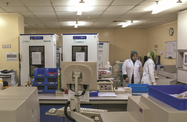With the South-east Asian medical tourism market rapidly expanding, Malaysia is working to capture a larger share, with industry's designation as a national key economic area (NKEA) central to this effort. The government hopes these measures will help boost health tourist arrivals from the 2010 total of 400,000, which generated revenues of $101.65m.
In an effort to address some of the segment’s shortcomings, the Ministry of Health is working to increase the level of transparency, asking private hospitals to publish their rates online. Furthermore, the ministry initiated legislation in February to govern fertility treatments and other reproductive procedures, while also giving the Malaysian Healthcare Tourism Council a lead role in coordinating the promotion of the market.
“We have instructed private health care facilities to inform patients clearly about their charges, including any unanticipated charges due to complications,” the health minister, Seri Liow Tiong Lai, said at a recent meeting with the Association of Private Hospitals of Malaysia.
While intended to protect patients, the move also squares with private sector demands to increase visibility by advertising cost benefits over key competitors. As Ted Mohr, the CEO of Penang Adventist Hospital, told OBG last year, “We need to start advertising our prices. For example, the cost of open-heart surgery is two times higher in Jakarta than in Penang and in 2010 we will be doing 400 open-heart surgeries here. In the US you can pay between $50,000 and $100,000 for open-heart surgery, but in Penang we do it for just $8500.” There is also an official cap on care charges in the private sector in Malaysia, which helps ensure medical care remains a good value for the money.
Along with the ministry’s steps, the government in February designated medical tourism as a NKEA, as part of its plans to position health care as “an engine of economic growth”. This NKEA is designed to help the country meet the goals of the government's 10th Malaysia Plan, which aims to create a high-income economy by the year 2020. A government report on the health care NKEA says the health tourism industry in Malaysia declined by 4% in 2009, citing “a lack of clear positioning relative to peers and an insufficient network of partners for source patients”. The markets in neighbouring Singapore and Thailand continued to grow during the same period, said the report, due to “leveraged price, quality of care and an overall health travel experience to retain volume”.
“We can either aggressively participate in the global shift towards Asia by becoming a major player in the region’s health care arena, or we can become marginalised as less developed countries, such as Indonesia, and less expensive countries, such as Vietnam, play larger roles,” said the report.
An economic analysis by the market research firm RNCOS, released in February, found that medical tourist arrivals will grow at a compound annual growth rate of about 17% during 2010-12, with 689,000 medical tourists expected in 2012.
Worldwide, the medical tourism sector is predicted to be worth some $100bn by 2012, according to a December 2010 report by Frost & Sullivan, a business research and consulting firm. Malaysian officials have said that to tap into this growth the country will need to follow the examples set by India and Thailand, which have offered reasonable prices, holiday attractions and modern, efficient facilities.
“We should view India and Thailand [as role models] because they are the most popular in the world as pioneers of the health care industry in quality services and competitive prices,” said the deputy minister of health, Rosnah Abdul Rashid Shirlin, on March 22.
Speaking at the Asia Healthcare Operations Summit 2011 in Kuala Lumpur, she said the government is currently enacting reforms in four key sectors: transforming delivery; increasing capacity, coverage, and improving the quality of the health care structure; shifting towards wellness and disease prevention, rather than treatment; and increasing the capacity and capabilities of human resources for health.
“According to Nuwire Investors, we are in the top five medical tourism destinations, but we must continue to work hard to place Malaysia strategically as a medical tourism destination of choice,” Shirlin said.
With a services export fund designed to support strategic investments helping finance Malaysian hospitals’ participation in overseas road shows, the government’s eventual aim is likely to reach beyond the main markets in the South-east Asian region to destinations such as the Middle East and China. In this respect, Malaysia can capitalise on its multicultural composition, with visitors from the Middle East feeling at home there in the same way that those from China do.
If efforts to boost transparency, upgrade facilities and improve marketing bear fruit, the country should be able to attract an increasing number of visitors for medical treatment, especially from new markets in Asia and the Middle East. The outlook for Malaysia’s medical tourism segment seems healthy indeed.
People also clicked:

